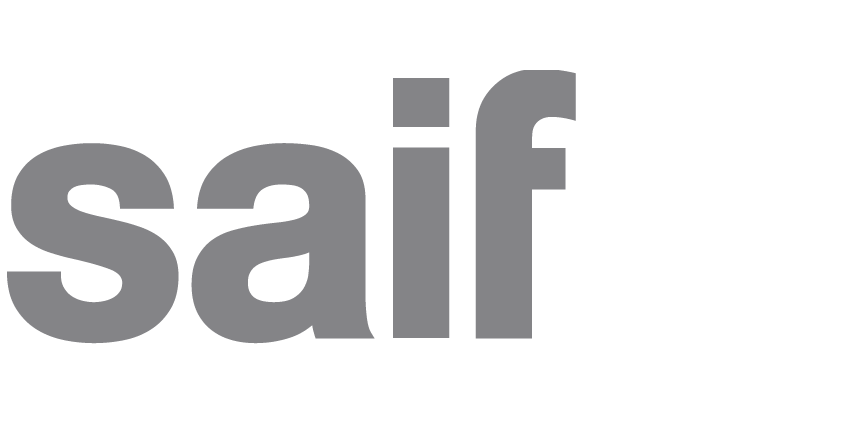12 months of safety tips
We've got a year's worth of resources and training to help you get back to safety basics.
Whether you need topics for your safety committee meetings or you just want to step up your workplace safety game, we’ve got a year’s worth of focus points for you.
These topics represent the most frequently violated Oregon OSHA standards during inspections. If you’re preparing for an Oregon OSHA compliance inspection, check out what to expect.
What you’ll find below is just the tip of the iceberg. Visit saif.com/safety for a library of resources, webinars, and classroom training.
SAIF is Oregon's not-for-profit workers' compensation insurance company. Since 1914, we've been taking care of injured workers, helping people get back to work, and keeping rates low by focusing on workplace safety. Together with our partners, we strive to make Oregon the safest and healthiest place to work.
JANUARY![]() | Post your OSHA 300A summary
| Post your OSHA 300A summary
If your business has 11 or more employees, you generally are required to keep a log of work-related injuries and illnesses. Oregon OSHA requires employers to compile this information for the previous year and post the OSHA 300A summary no later than February 1—and it’s common for businesses to get a citation if they don’t have it posted during an inspection.
Find out all about recordkeeping and posting your OSHA 300 log on our recordkeeping topic page.
![]() FEBRUARY | Document your lockout/tagout plan
FEBRUARY | Document your lockout/tagout plan
Lockout/tagout is the process for mitigating risk with hazardous energy when employees are performing service or maintenance on machines or equipment. Machinery is stopped, unplugged, locked, and tagged so other employees know it’s being serviced.
Oregon OSHA requires a hazardous energy control plan if employees need to bypass a guard or safety device to service any machines or equipment onsite. We have a template to get you started, and more on our lockout/tagout page.
![]() MARCH | Select, use, and store your ladder properly
MARCH | Select, use, and store your ladder properly
Because ladders are in nearly every workplace, it’s easy to forget they can be a hazard. But falls are one of the leading causes of workplace injuries. OSHA has requirements for every step of using a ladder—from selecting the right one for the job, to storing it at the end.
Visit saif.com/ladders for the resources you need to build ladder safety in your workplace.
Every workplace is required to have a hazard assessment. This involves evaluating any hazards you have onsite, documenting the personal protective equipment (PPE) available to workers, and certifying it.
Get started with our job hazard analysis and PPE assessment topic page.
Several of the most common Oregon OSHA citations are related to fall protection. They often are serious and carry large fines. The fall protection standard is also the most frequent repeat violation.
Review more information on Oregon OSHA’s page, along with their training on the topic.
![]() JUNE | Reduce the risk of heat injury
JUNE | Reduce the risk of heat injury
In 2022, Oregon OSHA passed new rules regarding heat safety that require employers to take specific measures when the heat index equals or exceeds 80 degrees.
You can find out all about the OSHA rules here and learn more about heat safety on our topic page.
![]() JULY | Remember regular forklift training
JULY | Remember regular forklift training
Oregon OSHA now requires anyone who operates a forklift (or powered industrial truck) to have training every three years. Different kinds of machinery and workplaces present different hazards, so experience at one worksite may not translate to the next.
Check out talking points and a short video series on forklift safety.
![]() AUGUST | Provide respiratory protection
AUGUST | Provide respiratory protection
When it comes to respiratory protection, it’s not just limited to wildfire smoke. Respiratory protection programs are required for other occupational hazards like welding and painting.
Find out what respiratory protection you need for tasks at your workplace.
![]() SEPTEMBER | Draft your emergency plan
SEPTEMBER | Draft your emergency plan
Two of the most common citations are related to emergency equipment: Fire extinguishers and emergency eyewashes and showers. Both should be part of your emergency action plan.
In honor of emergency preparedness month, create or review your emergency plan at saif.com/prepare.
![]() OCTOBER | Evaluate risk of bloodborne pathogens
OCTOBER | Evaluate risk of bloodborne pathogens
If there is a reasonable expectation an employee could contact bodily fluids, you need to have proper training in place. We often associate this with healthcare settings, but it could expand to several occupations—including janitorial.
Read up on biological and physical hazards and find out more on OSHA’s page.
Oregon OSHA’s most frequent citation is regarding chemicals: ensuring your business has a written hazard communication program. The United Nations Globally Harmonized System (GHS) provides labels for dangerous chemicals with easy-to-understand graphics and warning words.
Download this poster in English or Spanish for a quick explanation of each graphic and an example of what GHS labels require.
![]() DECEMBER | Keep your safety committee fresh
DECEMBER | Keep your safety committee fresh
If you have more than 10 employees, you generally must have a safety committee. Under 10? You’re still required to have regular safety meetings. But these don’t have to be boring.
We have tips on energizing your safety committee. Check out our talking points blog for relevant and timely topics to bring up at your next meeting.
Don’t stop there! Check out the safety and health page on saif.com for more topics.

